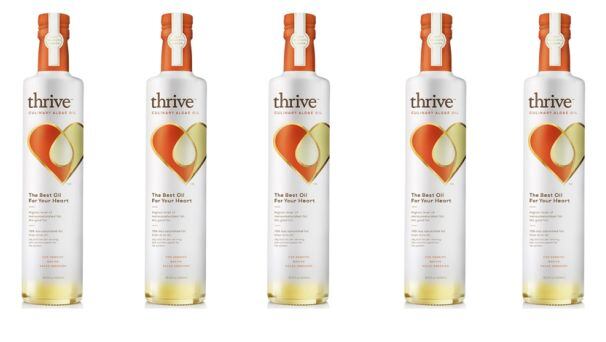The algae butter - which mirrors structuring fats such as shea stearin, with a high proportion of stearic-oleic-stearic triglycerides (~70%) – is going through the self-determined GRAS process, and is likely to launch in “early 2016”, senior vice president Mark Brooks told FoodNavigator-USA.
Conversations are ongoing but manufacturers are likely to be able to describe it as ‘algae butter’ on the ingredients list, added Brooks: “I don’t think we are precluded from calling it algae butter, just as you are allowed to say ‘cocoa butter’ or ‘shea butter’, which are not dairy-derived either."
He added: “We’re pretty excited as we’re offering a hard fat from a completely new source that we think will be a game changer for industry in terms of sustainability and nutrition in the world of structured fats.
“The algae butter also works really well in combination with our AlgaWise high oleic oils and means we can offer our customers a full complement of oils and fats with nutritional, sensory and sustainability benefits.”
Algae butter could replace PHOs and palm oil in confectionery, spreads, bakery applications
The algae butter is currently being road-tested by leading manufacturers in spreads, bakery and confectionery categories, and works particularly well in applications such as icing/frosting, and croissants, where hard fats that are solid at room temperature – but have certain melting properties - are required, said Brooks.
“The algae butter has a very sharp consistent melting curve that gives the consumer a really enhanced sensory experience, but also delivers from a technical and functional perspective, so confectionery melts in your mouth, not on your hand, and spreads are solid at room temperature but melt after you spread them on toast [full details of the algae butter's melting characteristics, fatty acid profile and potential applications will be unveiled at launch].
“What’s exciting is that you can combine the algae butter with liquid oils such as our high oleic algae oils and get a better nutritional profile, and use less of the structuring fat [in this example, the algae butter]. So our pastry chef here has found that she can make croissants using less of the structured fat than she usually would in that recipe.”
Manufacturers also like the algae butter because it means they could “eliminate partially hydrogenated oils [which create trans fats and are being phased out over the next three years] and replace palm oil [which is widely used in confectionery, spreads and bakery because it is semisolid at room temperature] or other oils with problematic supply chains with a product that is made in the US or Brazil [where Solazyme as a manufacturing facility with joint venture partner Bunge].”

We’re delighted with how Thrive culinary oil is performing
Asked about the performance of the firms new culinary algae oil Thrive, Solazyme’s first consumer product in the food space, Brooks said he was “delighted” with the numbers so far, although it was still very early days for the product, which is being test-marketed in 18 Gelson’s Market stores in southern California.
“We’ve only got around four weeks of retail sales data, but Thrive has been consistently above average for new product introductions in terms of sales velocity, which is saying something in a sleepy category like cooking oil, so we are delighted by the response we are getting.”
Solazyme has also been encouraged by the strong response from chefs to Thrive, which has attracted a lot of publicity because it is the first cooking oil made from algae on the market, he said.

While the chlorella microalgae strain used to make Solazyme’s AlgaVia flours and proteins is not genetically engineered, its oils and structured fats cannot be efficiently produced in native algae strains, so Solazyme uses GE techniques (eg. introducing genes from other plants, or inhibiting the production of certain enzymes in order to get more of the oil components it wants and fewer of those it doesn’t) in order to make precisely tailored oils with unique functionality.
However, there are no GMOs in the final AlgaWise oils, which are made from an oil-generating algae strain originally discovered in the sap of chestnut tree in Germany that has been genetically engineered to increase its productivity.
“I think a lot of them initially tried it because of the curiosity factor, but they come back and buy it again because it is outperforming the oils they currently use, and the high smoke point really brings out flavor of the food, so we are seeing really rapid take up and adoption on the foodservice side, in hotels, cafes, and restaurants.”
Thrive - which has < 4% saturates; > 90% monounsaturates; and < 4% polyunsaturates – will also be available to purchase online at Thrive Algae as the company builds distribution in the coming months, said Brooks.
